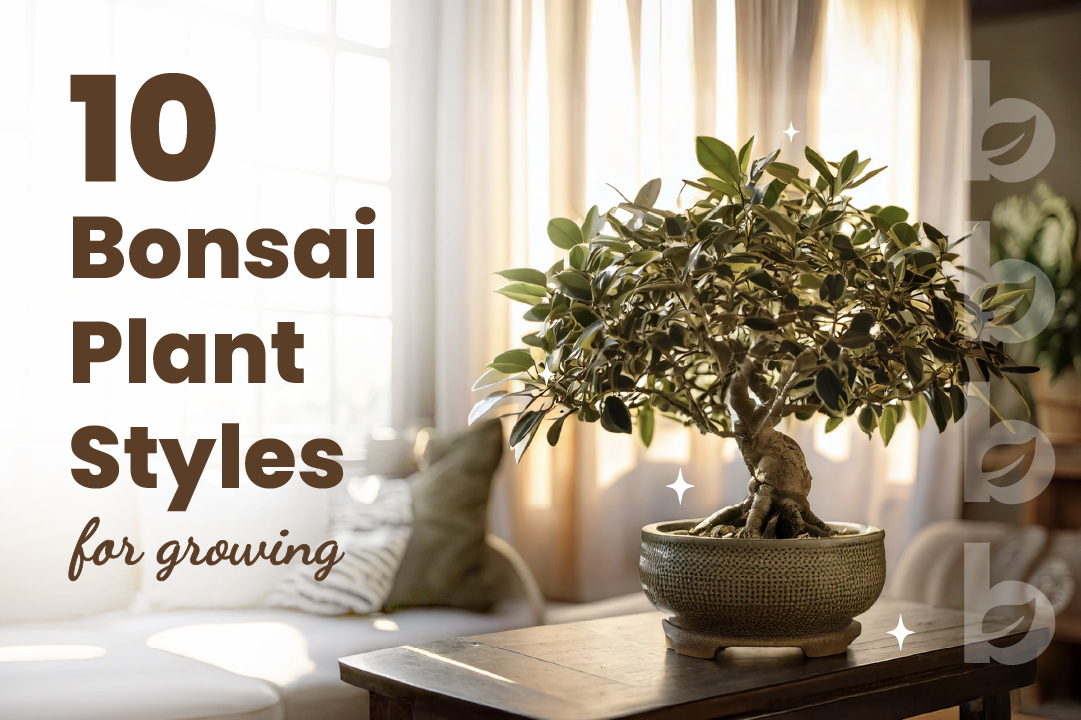
Bonsai is more than just a gardening technique—it is a living art form that captures the beauty of nature in miniature. For enthusiasts, choosing the right types of bonsai plants is essential, as each style brings a unique aesthetic and character to the tree.
In this guide, we explore 10 distinct bonsai styles, helping you understand how to shape your tree to reflect natural growth patterns.
1. Formal Upright (Chokkan) – The Classic Bonsai Form
The Formal Upright Bonsai style, known as Chokkan, is one of the most popular types of bonsai plants grown worldwide. It features a strong, straight trunk with balanced branches, mimicking naturally sturdy trees.
Key Features:
- Symmetrical, upright trunk
- Tapering from the base to the top
- Best suited for Japanese Black Pine, Juniper, and Spruce
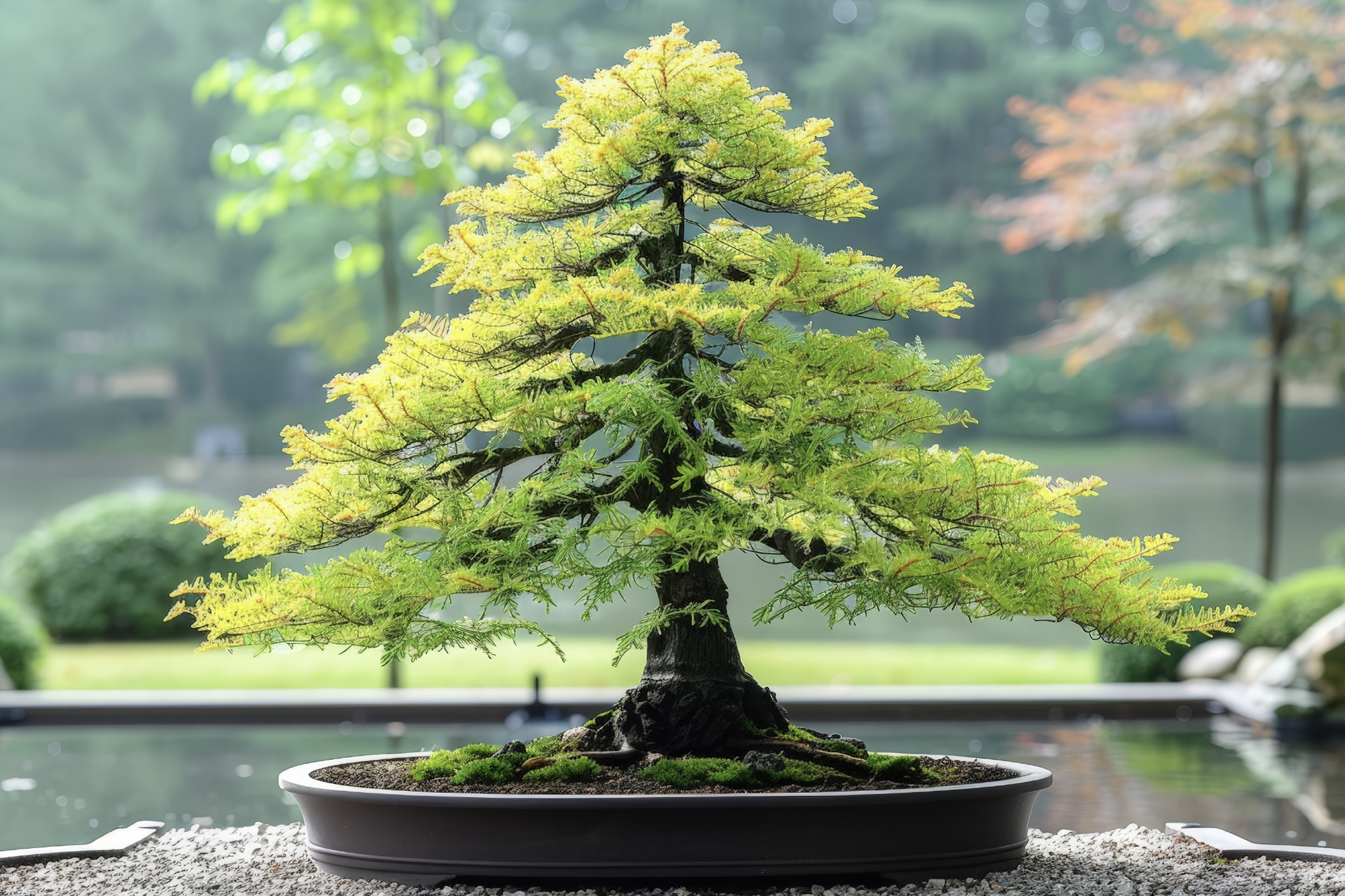
2. Informal Upright (Moyogi) – A Natural Look
Unlike the rigid Chokkan, the Informal Upright Bonsai (Moyogi) features a gently curved trunk, making it one of the most versatile types of bonsai plants for both beginners and experts.
Key Features:
- Naturally curved trunk
- Asymmetrical, but balanced shape
- Ideal for Ficus, Elm, and Maple Bonsai
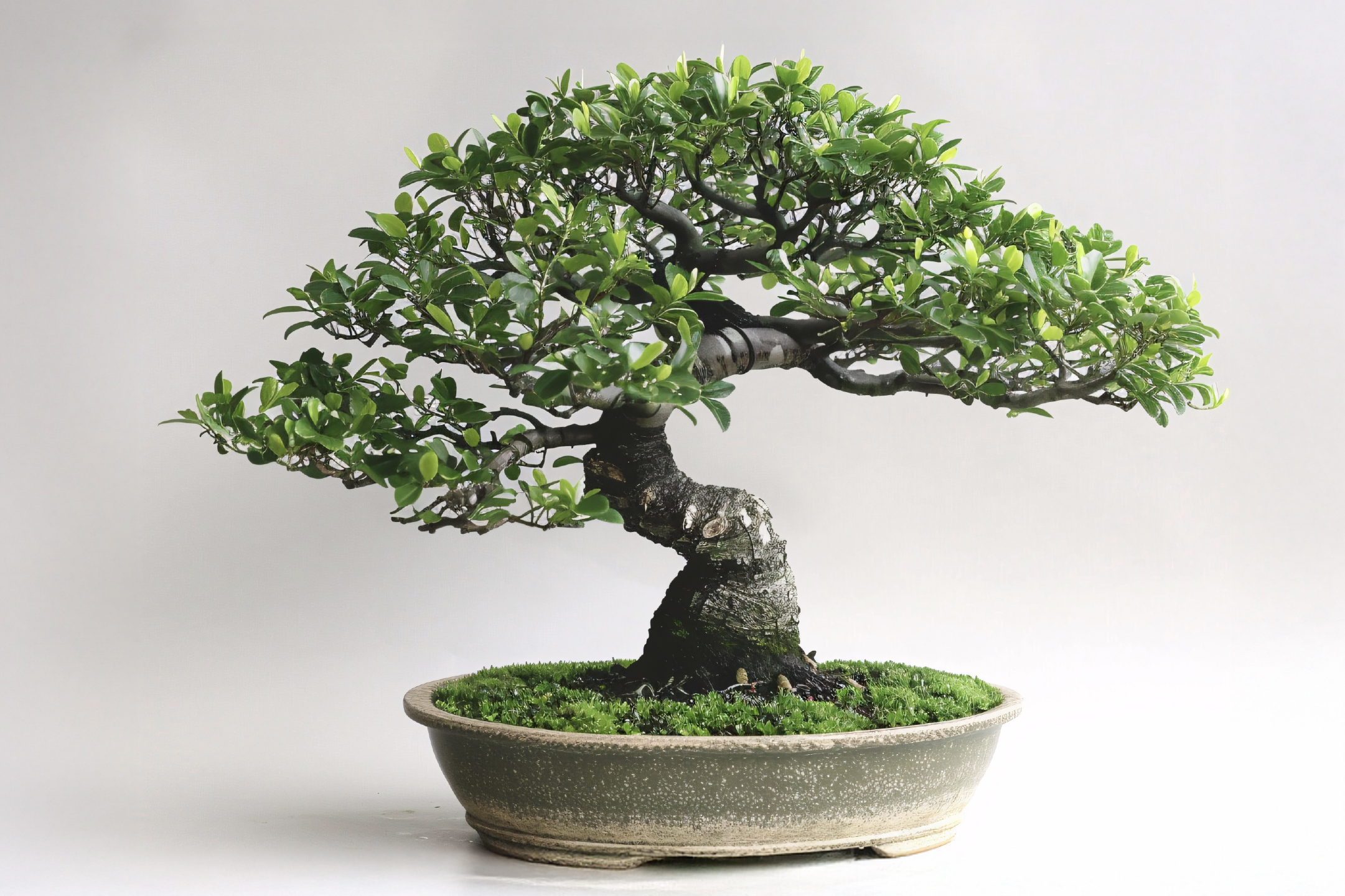
3. Slanting (Shakan) – Battling the Winds
The Slanting Bonsai Style (Shakan) represents trees shaped by strong winds, leaning sharply to one side.
Key Features:
- Trunk slants at a 45-degree angle
- Stronger root development on one side
- Works well with Pine, Juniper, and Azalea Bonsai
4. Cascade (Kengai) – Inspired by Waterfalls
A Cascade Bonsai (Kengai) mimics trees growing on cliff edges or waterfalls, where branches extend downward.
Key Features:
- Trunk bends dramatically downward
- Requires precise wiring to maintain the shape
- Ideal for Juniper, Cypress, and Pine
Image Idea: A stunning Cascade Bonsai draping over its pot.
Alt Text: "Cascade Bonsai (Kengai) – A Flowing, Waterfall-Inspired Bonsai Style"
5. Semi-Cascade (Han-Kengai) – A Balanced Elegance
A more subtle version of Kengai, the Semi-Cascade Bonsai (Han-Kengai) resembles trees growing near lakes or riverbanks, where branches bend slightly downward.
Key Features:
- Trunk angles slightly downward but remains above the pot’s base
- Natural, flowing structure
- Best suited for Japanese Maple, Pine, and Juniper Bonsai
6. Broom (Hokidachi) – The Mushroom Shape
The Broom Bonsai (Hokidachi) is one of the most visually stunning types of bonsai plants, perfect for deciduous trees.
Key Features:
- Straight trunk with an umbrella-like canopy
- Ideal for trees with small leaves
- Commonly used for Chinese Elm, Zelkova, and Maple Bonsai
Image Idea: A lush Broom Bonsai with vibrant fall foliage.
Alt Text: "Broom Bonsai (Hokidachi) – The Perfect Deciduous Bonsai Tree"
7. Windswept (Fukinagashi) – A Story of Survival
A Windswept Bonsai (Fukinagashi) represents nature’s resilience. The branches and trunk lean in one direction, showing the impact of strong winds over time.
Key Features:
- Trunk and branches grow in the same direction
- Dynamic, movement-filled design
- Best for Pine, Juniper, and Spruce Bonsai
8. Multi-Trunk (Ikadabuki & Sokan) – Forest on a Miniature Scale
Unlike single-trunk styles, Multi-Trunk Bonsai (Ikadabuki & Sokan) features multiple trunks emerging from the same root system, creating a miniature forest.
Key Features:
- Multiple trunks of varying heights
- Adds depth and natural aesthetics
- Works well with Ficus, Elm, and Beech Bonsai
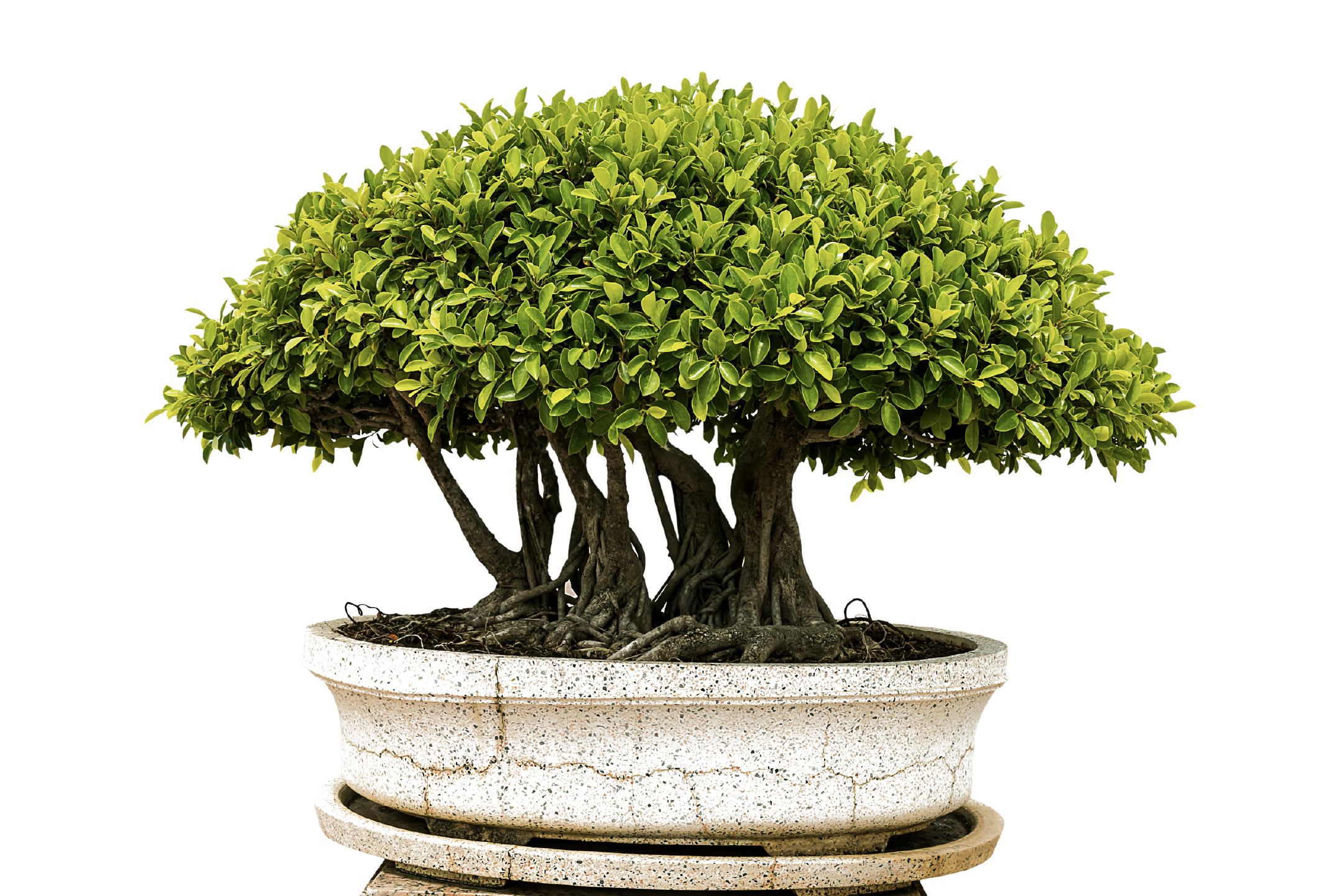
9. Literati (Bunjingi) – The Minimalist Art
The Literati Bonsai (Bunjingi) is a unique and artistic style, often featuring a tall, slender trunk with sparse branches concentrated near the top.
Key Features:
- Minimalist, abstract design
- Exposed trunk with few branches
- Best for Pine, Juniper, and Cypress Bonsai
10. Root Over Rock (Sekijoju) – Nature’s Resilience
The Root Over Rock Bonsai (Sekijoju) showcases roots gripping onto rocks, symbolizing the power of perseverance.
Key Features:
- Exposed roots wrapping around a rock
- Requires specialized training for proper root development
Works well with Ficus, Trident Maple, and Pine Bonsai
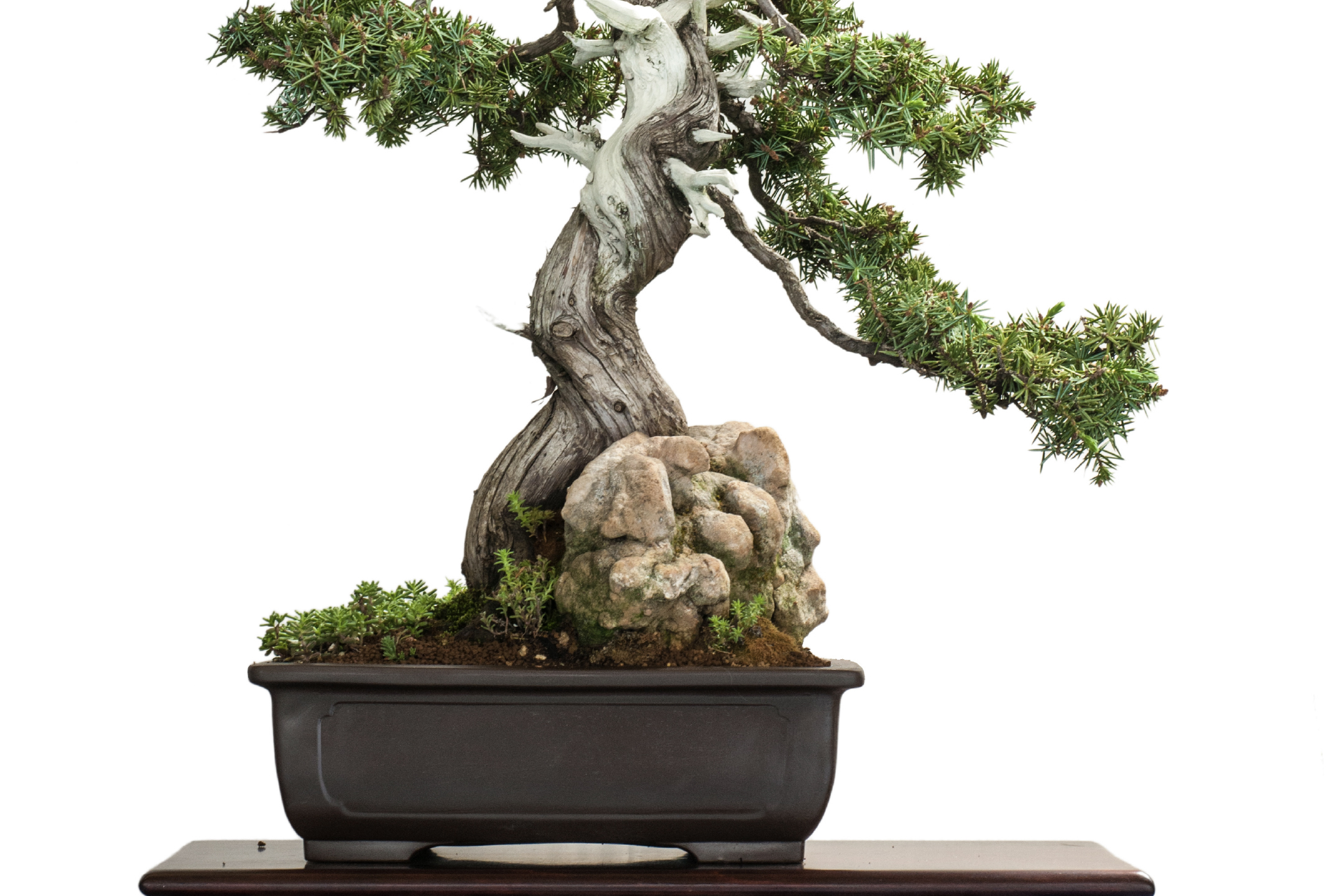
Final Thoughts
Choosing the right types of bonsai plants is the first step toward creating a masterpiece that reflects nature’s beauty. Whether you love the structured elegance of a Formal Upright Bonsai or the wild, rugged look of a Windswept Bonsai, each style tells a story.
By selecting the right bonsai style, mastering pruning techniques, and providing consistent care, you can cultivate a living work of art that thrives for generations.
FAQs
- What are the different styles of bonsai trees?
Bonsai trees are shaped into various styles that replicate natural growth patterns. The most popular styles include Formal Upright (Chokkan), Informal Upright (Moyogi), Slanting (Shakan), Cascade (Kengai), Semi-Cascade (Han-Kengai), Broom (Hokidachi), Windswept (Fukinagashi), Multi-Trunk (Ikadabuki & Sokan), Literati (Bunjingi), and Root Over Rock (Sekijoju). Each style has unique characteristics that mimic nature. - Which bonsai style is best for beginners?
The Informal Upright (Moyogi) style is the easiest for beginners. It follows the tree’s natural growth while allowing for slight curves, making it less restrictive and more forgiving. The Broom (Hokidachi) style is another beginner-friendly choice, especially for deciduous trees. - Can all tree species be trained into any bonsai style?
No, some species are better suited for specific styles. Pines and junipers work well for Formal Upright and Cascade styles, while maples and elms thrive in Broom or Informal Upright styles. Understanding a tree’s natural growth pattern helps in choosing the right style. - How long does it take to shape a bonsai tree?
Shaping a bonsai is a gradual process that takes years. Depending on the species, age, and styling method, it can take anywhere from 3 to 10 years to achieve a mature, well-defined bonsai. - Can I change my bonsai’s style over time?
Yes, but it requires patience. Gradual pruning, wiring, and branch redirection can help transition a bonsai into a different style without stressing the tree. However, not all transitions are easy—some styles, like Cascade, require years of training. - What are the most common mistakes in bonsai styling?
Common mistakes include over-pruning, incorrect wiring, and forcing a tree into an unnatural style. It's important to work with a tree’s natural shape rather than against it.



